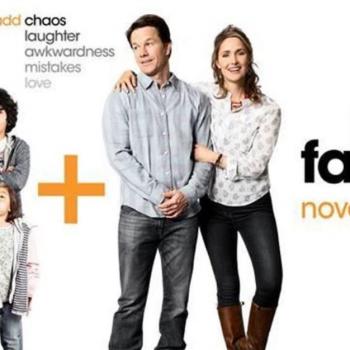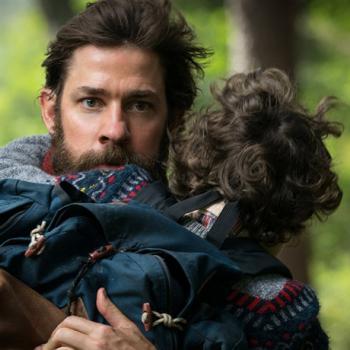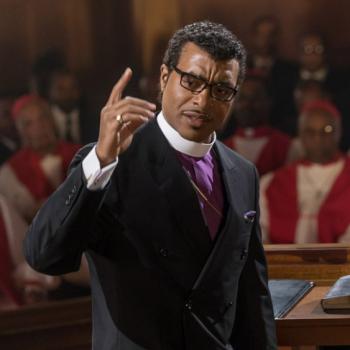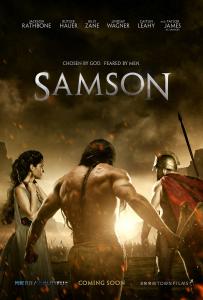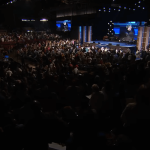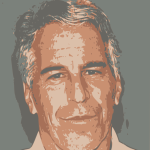 The very first films consisted of one long, unedited shot, with filmmakers simply pointing their cameras at a scene until the film stock ran out. The story goes that the first instance of editing occurred by accident, when a camera stopped working in the middle of a shoot and the filmmakers decided to piece two shots together rather than re-shoot the whole thing. Whether you believe that story or not, the practice of editing is what sets film apart from every other art form.
The very first films consisted of one long, unedited shot, with filmmakers simply pointing their cameras at a scene until the film stock ran out. The story goes that the first instance of editing occurred by accident, when a camera stopped working in the middle of a shoot and the filmmakers decided to piece two shots together rather than re-shoot the whole thing. Whether you believe that story or not, the practice of editing is what sets film apart from every other art form.
D.W. Griffith, in his epic spectacles The Birth of a Nation (1915) and Intolerance (1916), is credited with pioneering the classical editing techniques that have been used ever since. Francois Truffaut, the great French director, has commented on this classical style by saying, “As a rule, a film sequence is divided into shots that last between five to fifteen seconds. A film that runs an hour and a half will average six hundred shots.” Sergei Eisenstein deepened the well of editing techniques by his creation of the montage style, where many quick cuts combine to underline the action and chaos of a set piece. The classic example of montage is the staircase sequence in his film, Battleship Potempkin (1925).
Alfred Hitchcock was a master director who used montage principles in the famous shower scene in Psycho (1960) as well as in The Birds (1963), which has around 1,360 shots in it. Hitch pursued the opposite path from the montage style, however, in seeing how few cuts (edits) he could make in the film Rope (1948). The maximum length that a shot could be in those days, due to the amount of film able to be loaded in the camera, was 10 minutes; Hitchcock shot only 10 takes for the 80 minute film. Paul Thomas Anderson is also known for his long takes in films such as Magnolia (1999), Punch-Drunk Love (2002), and Boogie Nights (1997). Neither of these filmmakers, however, have been as ambitious as Aleksandr Sokurov, whose film, Russian Ark (2002), was shot in the Hermitage Museum in Russia in a single day, in a single, uncut 96 minute sequence.
Enter director Alejandro Iñárritu and cinematographer Emmanuel Lubezki, the creative team behind this year’s Oscar Best Picture winner, Birdman: Or (The Unexpected Virtue of Ignorance). Lubezki is one of the best cinematographers in the business and is well-known for his long takes. In Children of Men (2006), there are two unbroken shots that seem to run incredibly long for the amount of action that is happening in them. In Gravity (2013), the opening scene in space runs seemingly without a cut for over 13 minutes. Lubezki, however, does not necessarily want to be identified as a one trick pony. He recently said in an interview, “I was disappointed that with Children of Men, people noticed that the car scene was one shot with no cuts. If people notice that, it’s like they’re noticing my trick, you know what I mean? I’m doing it so people will get immersed in the movie, not to show off.”
In Birdman, there are only sixteen visible cuts in the entire film. The effect of so few cuts is to create the sensation of a continuously rolling camera and therefore unbroken action. Of course, there are many more edits than what is obvious to the naked eye, but there are still long, uninterrupted scenes. What is interesting is that although Lubezki won his second straight Academy Award for Best Cinematography (following his win for Gravity), the film was not nominated for Best Editing. Possibly the reason for the lack of a nomination for Editing was either 1) because the film plays as one continuous scene, the editing did not stand out to Academy voters, or 2) because the movie was shot in sequence (ie, unlike most films, it was filmed from start to finish in sequential order), the editing process was much shorter than usual.
Of course, for actors and technicians, it is very difficult to film long scenes, because everything has to be perfect. The actors in Birdman have talked in interviews about how some scenes require them to speak up to 15 pages of dialogue at a time. Hitchcock relates to Francois Truffaut in the book Hitchcock Truffaut how hard it was to film Rope. “I was so scared that something would go wrong that I couldn’t even look during the first take. For eight minutes of consecutive shooting everything went very smoothly. Then the camera panned around as the two killers walked back toward the chest, and there, right in camera focus, was an electrician standing by the window! So the first take was ruined.”
The question we ask of a film like Birdman is, why shoot it this way? Is there a reason for such a technical challenge, or is the style winning out over the substance? Are the creative minds showing off, or are they harnessing every weapon in their arsenal to tell the very best story that they can? Simply put, do the long takes serve the story?
Birdman has many cinematic allusions, from Fight Club (1999) to Mulholland Drive (2001) to Batman (1989). But it is also full of theatrical allusions, most notably Macbeth, some even seeing the film as a riff on the Scottish play. And herein lies part of the justification for Birdman’s technique. Since the film is all about Riggan Thomson’s (Michael Keaton) desire to gain respect by going from movies to theater, Hollywood to Broadway, one of the main differences between the two art forms is found in the ability to edit. The only ‘edits’ that are possible in a play are when the lights go dark or when the curtain closes. Otherwise, the effect of a play is of continuous action. This is one reason some actors and critics have more respect for the theater, because there is so little margin for error, and an actor (and director for that matter) does not have the luxury of re-shooting a scene twenty times. Hitchcock may have had similar thoughts when he filmed Rope, as the material was originally a play. In Birdman, not only does the style point us towards the wonder and challenge of theater, we might also wonder if the actors themselves relished the challenge of acting without cutting.
A second reason for indulging in such difficult technique is that the long takes underscore the nature of celebrity, a key theme of the film. Classic editing allows the mind to “rest” when the scene shifts and the camera cuts the emotion of a scene. By not cutting, and thus not allowing us to rest, we get some sympathy for celebrities, like Riggan Thomson, who are under constant public scrutiny everywhere they go.
The third, and most compelling reason I think the style of Birdman works, is because it helps us to feel Riggan’s existential struggle. His life is moving too quickly through middle age, his career is moving too fast to extinction, and his play’s opening night is coming at him without a delay. The continuous moving camera does not let us rest, just as Riggan’s mind is unable to rest. Iñárritu admitted as much in an interview with Variety, saying, “I realized — and I am probably the last person in the world to realize this — that we live our lives with no editing. From the time we open our eyes, we live in a Steadicam form, and the only editing is when we talk about our lives or remember things. So I wanted this character to be submerged in that inescapable reality, and the audience has to live these desperate three days alongside him.”
On the whole, the style works for the content of this film. We do get immersed in the story and in Riggan’s mindset. The visual presentation is a bit showy, and like most great artists, I doubt Iñárritu will explain all the reasons why he chose to tell the story of Birdman the way he did. However, maybe this modern master of cinema, in a film about the nature of movies, wanted to give a nod to the founding of the cinema itself, when it was all one long take.




